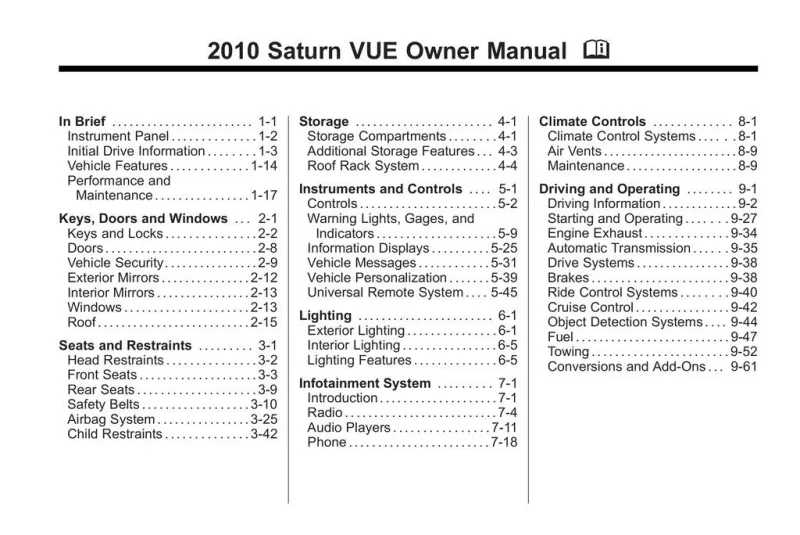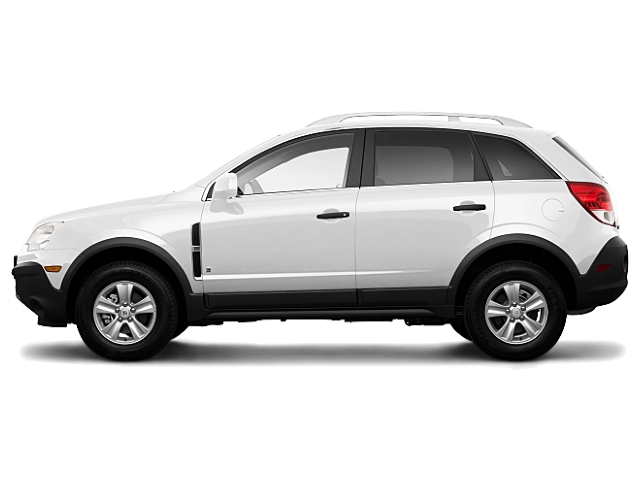2010 Saturn Vue Owner's Manual

Table of Contents
2010 Saturn Vue Overview
Introduction
The 2010 Saturn Vue stands out in the compact SUV segment, offering a blend of practicality, style, and robust performance. With its sleek design and spacious interior, the Vue is an ideal choice for families or anyone needing versatile transport. Built with a focus on comfort and utility, this model carries forward Saturn's legacy of customer-friendly vehicles that deliver reliable functionality with a touch of modern flair.
Powertrains
The engine options for the 2010 Saturn Vue illustrate its commitment to performance and efficiency. The base model is equipped with a 2.4-liter four-cylinder engine that produces an impressive 169 horsepower. For those seeking a bit more muscle, a 3.5-liter V6 engine is available, generating 251 horsepower. Both engines are paired with a six-speed automatic transmission, providing smooth acceleration and responsive handling. Additionally, the Vue offers available all-wheel drive, enhancing traction and stability in diverse driving conditions.
Trims
The 2010 Saturn Vue comes in three well-equipped trims: the XE, the XR, and the upscale XR Hybrid. The XE serves as the base model, featuring essentials like full power accessories, air conditioning, and cruise control. The XR adds more luxurious touches, such as premium upholstery, upgraded audio, and a sunroof. The XR Hybrid is designed for environmentally conscious drivers, offering enhanced fuel efficiency without sacrificing performance, thus providing a practical yet eco-friendly option.
Features
This model is loaded with a variety of modern features aimed at both comfort and convenience. Standard amenities include a sound system with a CD player and an available iPod interface. For enhanced safety, the Vue comes with standard stability control, antilock brakes, and multiple airbags. Optional features such as navigation systems, rearview cameras, and Bluetooth connectivity further elevate the driving experience.
Owner's Manual
The owner's manual for the 2010 Saturn Vue serves as an essential guide for all vehicle operations and maintenance. This comprehensive document provides detailed instructions on features, troubleshooting tips, and safety guidelines, ensuring that owners can maximize their enjoyment and longevity of the vehicle. It's a vital resource for maintaining the Vue's performance and preserving its resale value, making it an indispensable tool for all Vue owners.
User manual download
The Saturn Vue owner manual for the 2010 model year is to be found in PDF downloadable format on this page. The owner manual for the model year 2010 is free and in English, but the repair manuals are usually not easy to get and may cost more.
Manual Questions
Fill the form below and someone will help you!

